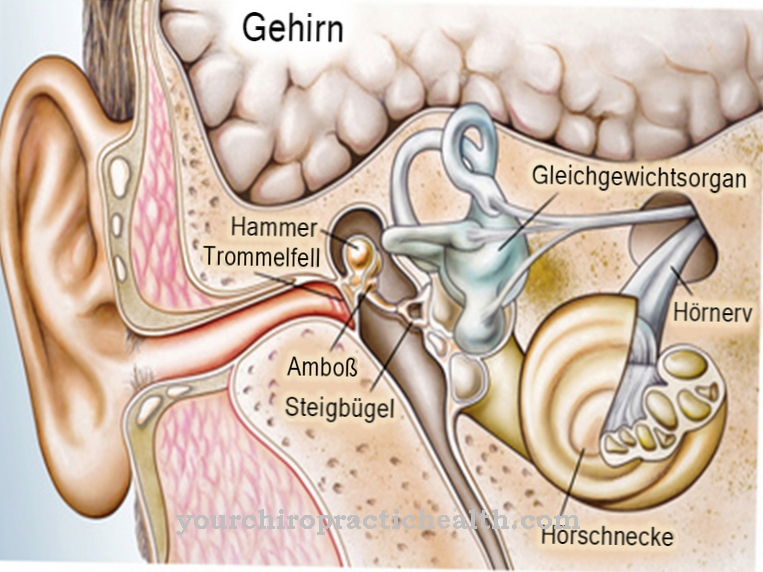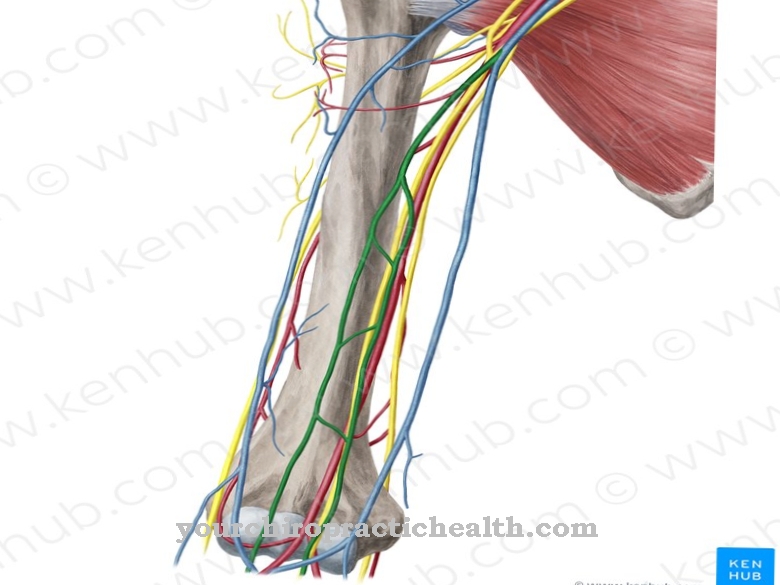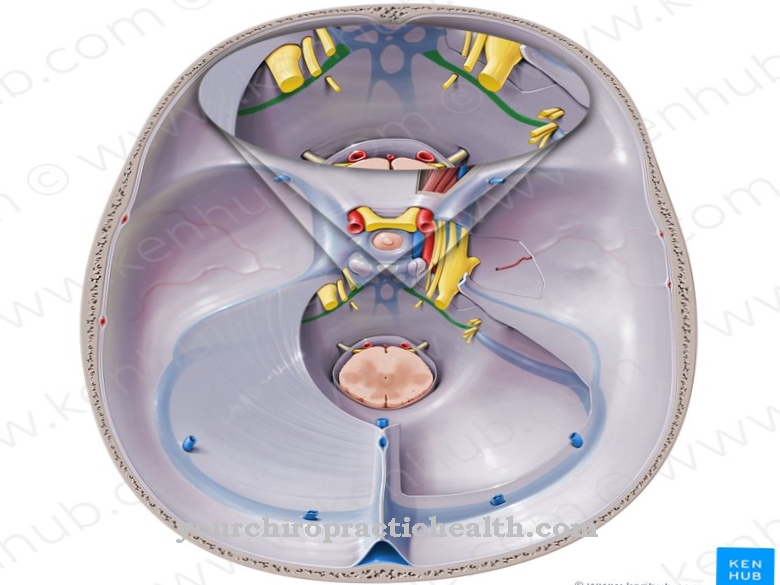That lies in the throat Pharyngeal plexus, which is a plexus of nerves and mainly contains fibers from the ninth and tenth cranial nerves. It controls the muscles of the pharynx and palate as well as glands in the pharynx, which it also sensitively innervates. Swallowing disorders (dysphagia) and sensory disorders can be due to damage to the pharyngeal plexus.
What is the pharyngeal plexus?
The pharyngeal plexus is located in the pharynx, where it forms a network of nerve fibers, which include motor, vegetative and sensory pathways. They control the throat constrictor (Musculus constrictor pharyngeus), the pharyngeal elevator (Musculus levator pharyngis, without Musculus stylopharyngeus) as well as glands and sensory nerves in the pharyngeal mucosa. Throat tighteners and throat lifters together form the throat muscles.
The pharyngeal plexus lies on the pharyngeus medius constrictor muscle, which is related to the ontogenetic development of the nerve plexus. While the muscles are still developing, they pull their nerves with them and change the position of the individual nerve fibers - a neuronal plexus is created that contains parts from different pathways. Medicine roughly divides nerve plexuses into two groups based on their functions. A vegetative plexus primarily innervates the smooth muscles of organs, blood and lymph vessels, and glands. In contrast, both the control of striated skeletal muscles and the transmission of sensory information belong to the tasks of a somatic neural network.
Anatomy & structure
The pharyngeal plexus lies in the throat on the musculus constrictor pharyngeus medius. Most of the fibers of the nerve plexus come from the ninth cranial nerve (glossopharyngeal nerve) and from the tenth cranial nerve (vagus nerve). The glossopharyngeal nerve divides in its course into various branches, from which the pharyngeal rami extend to the pharyngeal plexus. The vagus nerve also has a pharyngeal branch that leads to the nerve plexus.
The two cranial nerves arise from different nuclei of the central nervous system. Each of them contributes to the pharyngeal plexus motor parts. Further pathways are vegetative fibers of the glossopharyngeal nerve, which influence the pharyngeal mucous membrane glands, and sensory fibers of the vagus nerve, which lead afferently to the brain. Neurons from the glossopharyngeal nerves and the vagus nerves make up the majority of the pharyngeal plexus. The plexus also contains fibers from the upper laryngeal nerve (superior laryngeal nerve) and the upper cervical ganglion (superior cervical ganglion).
Function & tasks
With the help of motor fibers, the pharyngeal plexus controls the upper pharyngeal constrictor (musculus constrictor pharyngis superior), the middle pharyngeal constrictor (musculus constrictor pharyngis medius) and the lower pharyngeal constrictor (musculus constrictor pharyngis inferior).
The superior pharyngeal constrictor muscle is located in the upper part of the throat. When swallowing, its task is to close the nasopharynx (pars nasalis pharyngis or epipharynx) so that no liquid or food can enter the nose. The musculus constrictor pharyngis medius lies in the middle of the three throat constricters. When it contracts, it narrows the pharynx (pars oralis pharyngis or mesopharynx), which is located at the junction between the pharynx and the oral cavity. In this way, the musculus constrictor pharyngis medius transports the food or fluid dorsally - the musculus constrictor pharyngis inferior performs the same function in the lower pharynx.
The pharyngeal plexus also depends on the pharyngeal plexus. They have three muscles, but only the palatopharyngeus and salpingopharyngeus muscles receive their commands from the pharyngeal plexus. During the swallowing process, their job is to lift the throat. They can also help to equalize pressure in the middle ear via the torus tubarius. The pharyngeal plexus controls these muscles with the help of its motor parts. Efferent fibers also control the glands in the pharynx.
They produce a secretion that keeps sensitive skin moist and makes food easier to slide down. The nerves involved are part of the autonomic nervous system and are not subject to human control. Sensitive fibers of the pharyngeal plexus also end in the pharyngeal mucosa. They pick up stimuli and pass them on as electrical impulses to the nerve plexus and higher processing areas. The sensitive nerve fibers transport information about temperature, pressure and touch stimuli as well as pain.
You can find your medication here
➔ Medicines for sore throats and difficulty swallowingDiseases
Swallowing and sensitivity disorders in the throat can occur when the pharyngeal plexus is damaged. In the case of such a sensory disorder, the sensitive nerve endings in the pharyngeal mucosa are able to detect stimuli, but a damaged pharyngeal plexus can no longer (fully) process them.
Swallowing disorders are also known as dysphagia in medicine. In connection with the pharyngeal plexus, both motor and sensory disorders can cause swallowing problems. In practice, both symptom areas often occur together, as the fibers mix in the pharyngeal plexus.
Sensory disorders of the throat can hinder the swallowing reflex: Usually, irritation of the pharynx, tongue and palatal arches automatically triggers the swallowing reflex. However, if the swallowing centers, which are mainly located in the brain stem, no longer receive appropriate signals, the motor response may not be available or it may come too late. This makes it easier for food and fluids to penetrate the nasopharynx or the airways. The aspiration of foreign bodies carries the risk of mechanical tissue damage and infection.
If the motor fibers of the pharyngeal plexus are damaged, throat constricters and pharyngeal elevators no longer receive nerve signals that give them the signal to contract. In this case, too, dysphagia is the result. The sense of taste does not have to be affected by these complaints. There are numerous causes for pharyngeal plexus lesions, including neuromuscular diseases, unintentional surgical or radiation damage, inflammation, and diseases of the central nervous system.

.jpg)











.jpg)

.jpg)
.jpg)











.jpg)